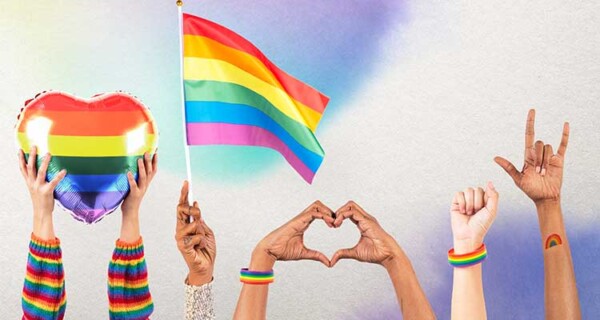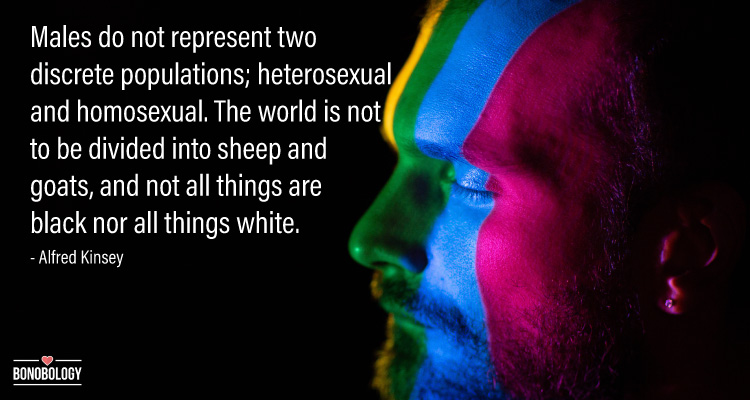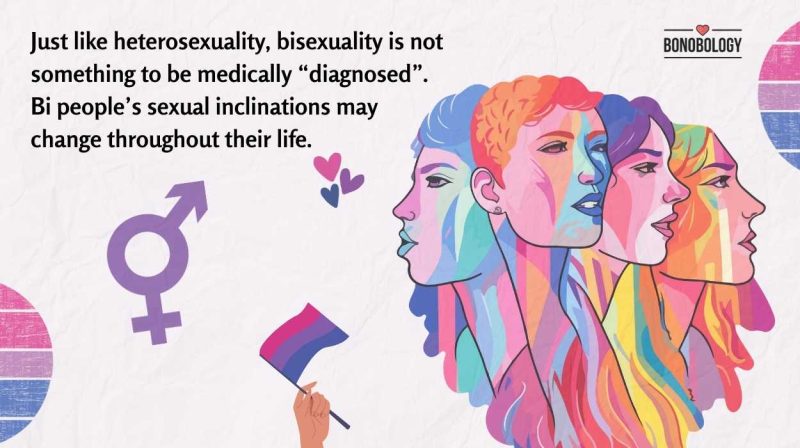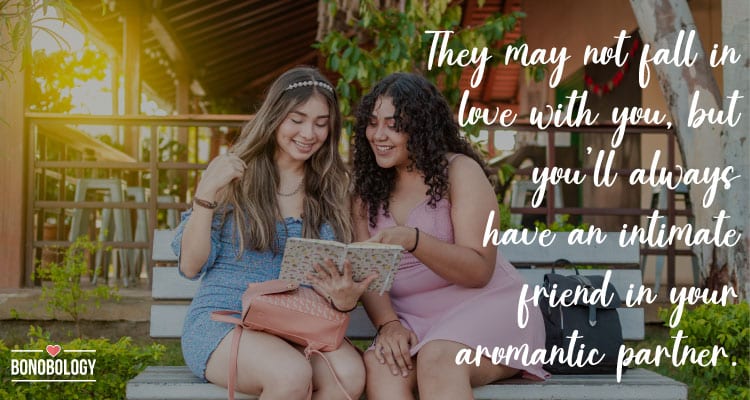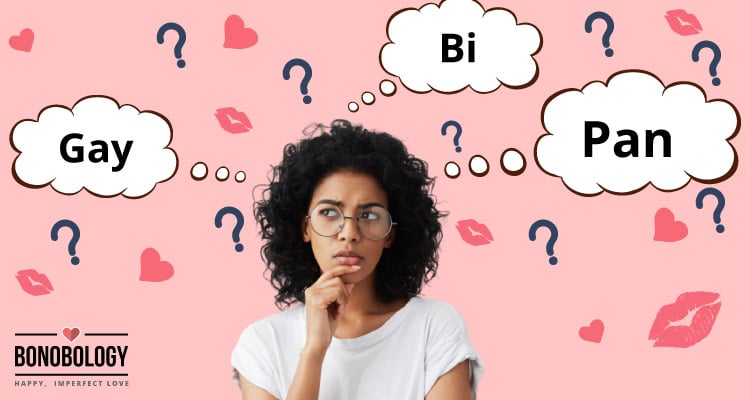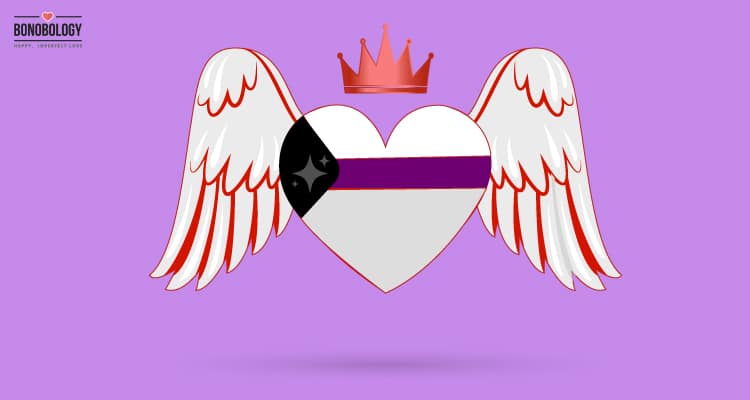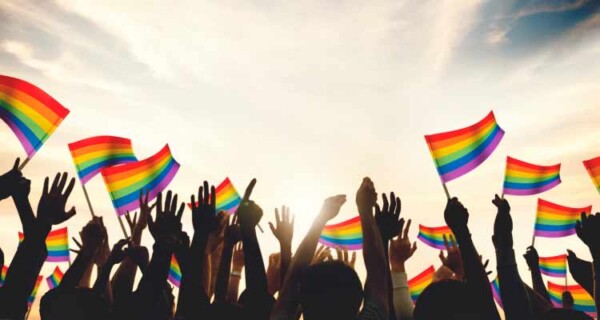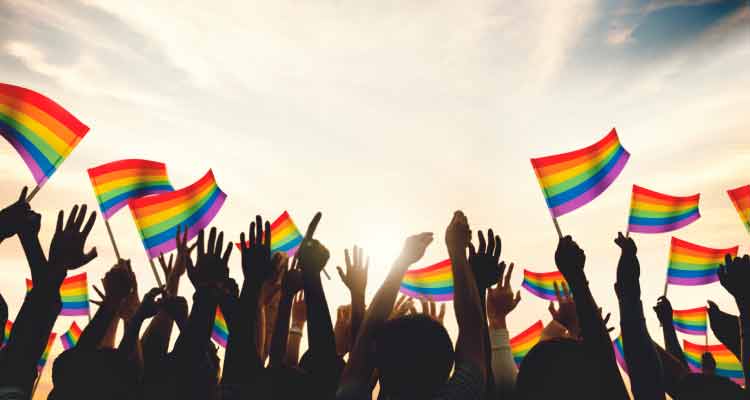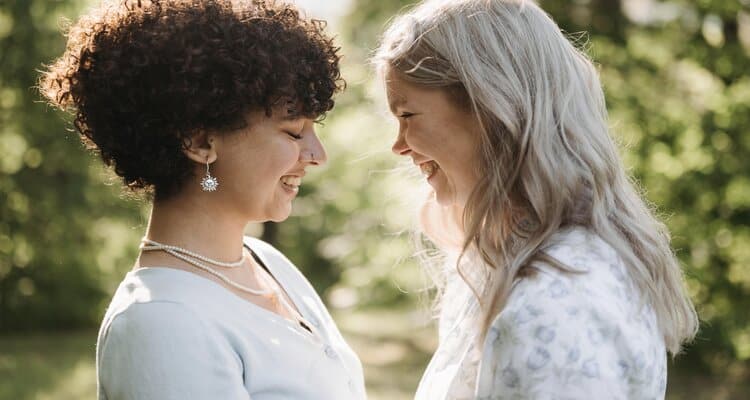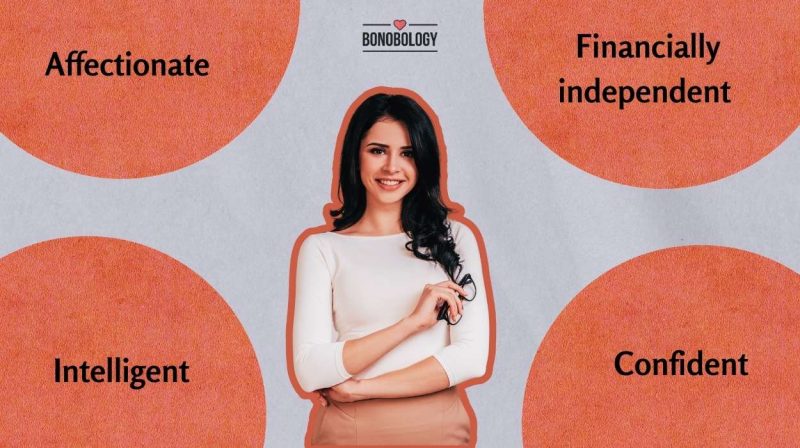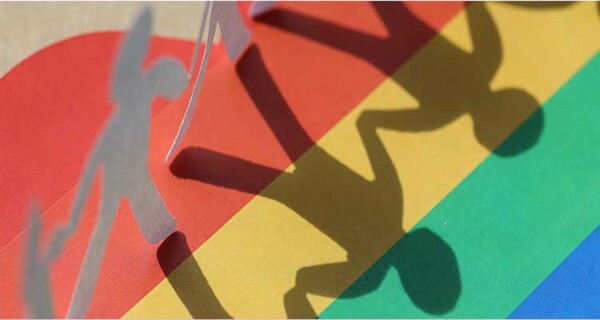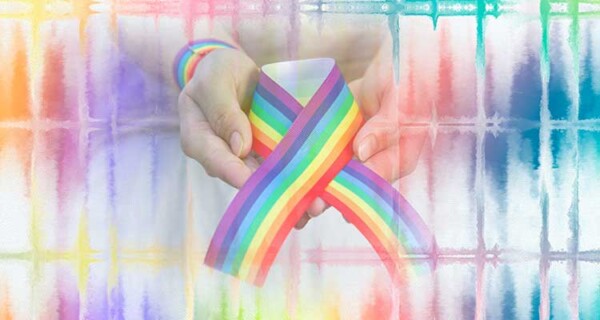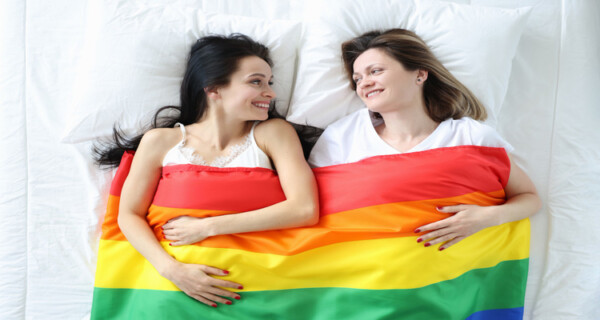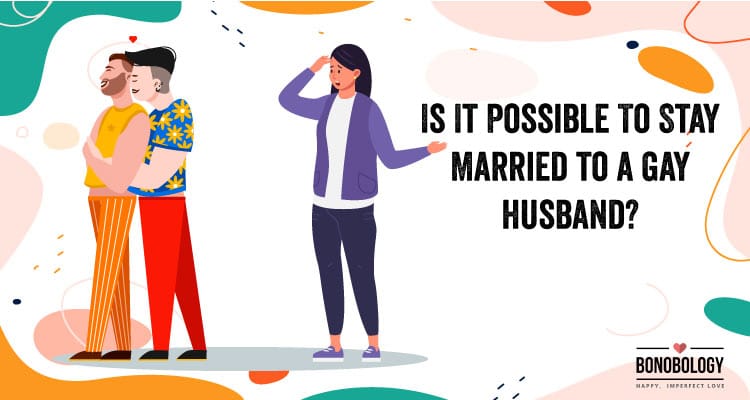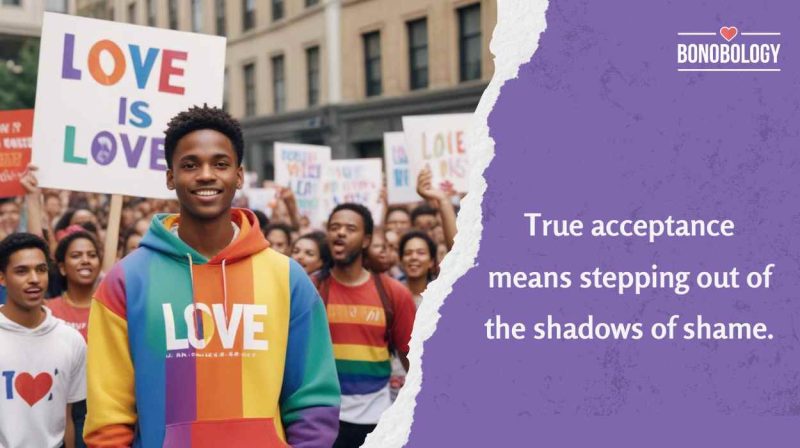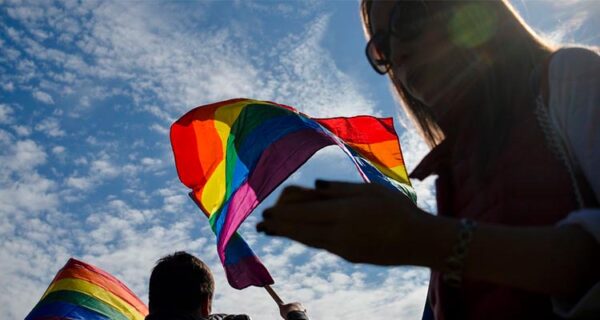Gone are the days when the concept of the gender binary, coupled with heteronormativity, led people to discredit the sexuality spectrum. Today, society is starting to learn to accept fluidity as the norm when it comes to not just who we are but who and how we love. We are learning more about different types of sexualities. And as more and more people step up to acknowledge their gender and sexual identity, newer terms and categories are constantly introduced to the repertoire.
A recent survey found that more than 1.3 million people in England and Wales identify as lesbian, gay, or bisexual. Some 165,000 people identify as ‘other’ sexual orientations. And 262,000 people said their gender identity was different from their sex registered at birth. Clearly, we are everywhere yet, in many ways, the discourse around different sexualities hasn’t caught on as it should have.
To do our bit to change that and give you better clarity on this subject, let’s take a closer look at the different types of sexualities in consultation with counseling psychologist and certified life-skills trainer Deepak Kashyap (Masters in Psychology of Education), who specializes in a range of mental health issues as well as LGBTQ and closeted counseling. He explains, “Sexuality is about who you’re attracted to, and how you are attracted to people. And gender identity dictates how you understand and look at yourself in the social expression of your body. Pronouns play a huge role in that self-affirmation.”
With regards to pronouns, Deepak adds, “You go up to that person and ask, “What pronouns do I use for you?” As simple as that.” For the uninitiated, queer or otherwise, this ever-growing collection of words can get overwhelming. But fret not, baby queers and new allies, for I will attempt to give you a small crash course on LGBTQIA+ meaning, the difference between gender and sexual orientation, between romantic attraction and sexual attraction, as well as address questions like, “what is sexuality”, “is sexuality is a spectrum”, and “how many types of sexualities are there”.
What Is Sexuality?
Table of Contents
According to sexologist Carol Queen, Ph.D., it’s the way a person feels and expresses their relationship to sex, desire, arousal, and eroticism. It’s a person’s sexual, physical, or emotional attraction to people. There are many different types of sexualities, 18 of them have been covered ahead.
Sexual identity is fluid and can evolve – all sexualities and meanings do. Don’t be surprised if after years of being a lesbian, you suddenly realize you’re attracted to men too. Or after being straight all your life, you realize in your 40s that you’re actually quite pansexual and experience sexual and romantic attraction to basically all kinds of people.
What impacts sexual identity? The way we interact with the world, the way we keep our mind open to experiences and the full gamut of human emotions, the way we decondition ourselves from the normative scripts, the way our politics evolves (attraction is political, yes), the way we familiarize ourselves to new concepts and allow them to take root within us — all of this naturally affects how we experience sexual attraction all our lives.
Related Reading: 21 LGBTQ Flags And Their Meanings – Know What They Stand For
It’s absurd to think that we can box something as volatile, abstract, and politically dynamic as sexual attraction. Imagine this: If there was no heterosexuality as a default, we wouldn’t need any other label as well. People would stop assuming the gender you like, and we wouldn’t have to waste so much time explaining why certain sexualities are valid or even scientific. People would just be attracted to people. So, the concept of sexuality/sexual orientation only exists because we consider heterosexuality to be the norm.
Another sexuality definition is this: Sexuality is also your capacity for sexual feelings. For example, a straight person could say something like: “When I wear this outfit, it really affirms my sexuality” or “My partner is so encouraging when it comes to me exploring my sexuality or experimenting in bed.”
What’s the LGBTQIA+ meaning?
And what does LGBTQ stand for? LGBTQIA+ is an initialism that stands for lesbian, gay, bisexual, transgender, queer and questioning, intersex, asexual, and aromantic. It is an umbrella term for the queer community and includes all sexualities AND gender identities. For example, B stands for bisexual – a sexual orientation, and T is for transgender – a gender identity. The + denotes all types of sexualities and genders that either cannot be described/labeled or the ones that we would continue to discover.
Is it important to know your sexuality?
Before we read the sexual orientation list, let’s see if knowing your sexuality/sexual orientation is important. Well, it can be hard and liberating, but may not be ‘necessary’ for you to figure out.
- Am I gay or am I bisexual? You don’t have to know for sure. Many people in the LGBTQIA+ community keep evolving when it comes to their identity and are okay with going label-free, or adopting a larger label like ‘queer’ or ‘gay’ to describe themselves
- Millions of ‘straight’ people, too, like to not think about the true nature of their desire and attraction all their lives
- On the other hand, you may wish to know your sexual orientation in order to a) feel more at peace with yourself, b) understand your romantic/sexual feelings and maybe even manifest love for yourself, c) name the oppression you’re facing (acephobia, biphobia, etc.), d) find a safe space and a community of like-minded folks
- In that case, please know it’ll take time and patience to unlearn/learn and you’ll need to be gentle with yourself
- Even after you do know the correct label(s) for yourself, it’s not necessary to come out to anyone. Your identity is a personal fact
- Your sexual orientation definition could vary from others who have the same orientation, and that’s normal
Related Reading: 10 Ways The Queerphobia Is Coming From Inside The House
Does sexuality have a spectrum?
There’s no one way to describe sexual orientation. The way I see sexuality, it’s more like the fluid motions of an ocean, and you pick the shade and wave that suits you best. It’s not a linear spectrum that goes from heterosexual to homosexual (like the Kinsey Scale suggested). All these identities, for you, can be floating pieces of labels that merge, overlap, and detach with time and awareness.
Difference between gender identity and sexuality
You don’t have to come out of the closet, ever. But you do need to be aware of the distinction between a person’s sexuality and gender identity. Gender includes the social, psychological, cultural, and behavioral aspects of being a man, woman, or any other gender identity. So, gender identity is what you perceive your gender as, whereas sexuality/sexual orientation indicates the gender(s) you’re attracted to.
E.g.: You are a trans man and you’re straight. This means your gender is ‘man’, and your sexual orientation is ‘heterosexual’, i.e. you’re only attracted to women.
Difference between romantic orientation and sexual orientation
We conflate the two ‘feelings’ so much that we think sexual attraction and romantic attraction must work together all the time. However, romantic orientation indicates the gender(s) you’re romantically attracted to (may not be sexually attracted to them), and sexual orientation is about the gender(s) you’re sexually attracted to (may not be romantically attracted to them).
You, as a woman, might be sexually attracted to other women. So you’re a lesbian. But you’re romantically (not sexually) attracted to men. This makes you heteroromantic AND homosexual. That’s the difference between sexual and romantic attraction/sexual and romantic orientation.
18 Types Of Sexualities And Their Meanings Simplified
No matter who you are, who you love, and how you choose to express your feelings to someone you love – there is a place for you in this world. It’s a good idea, then, to know all sexualities and meanings. After all, even though labels don’t matter, they do help you seek a community. If you wish to be vocal about your sexuality, Deepak has this tip for you, “You first ascertain that you will stay safe after you come out. And when you do come out, never use an apologetic tone. You simply state who you are.”
Before getting into the terminologies, let’s look back at history for a second. After a massive survey, American biologist and sexologist Kinsey invented a scale of the sexuality spectrum for better categorization of different sexualities. Despite being a revolutionary work, the Kinsey scale has lost its relevance in the modern world because it fails to capture nuance as well as other complex sexual identities.
So, how many sexualities are there in 2023? All sexualities and their meanings will continue to grow, and this is not a comprehensive list. But if you are still exploring your identity, this is the right guide for you. Without further ado, here’s a list and the meanings of 18 different types of sexualities out there:
1. Allosexuality
Let’s begin the discussion of all sexualities and their meaning with allosexuals, people who experience sexual attraction and engage in sexual activities. People with this type of sexuality can experience both romantic and physical attraction toward people. The world currently operates with the default mindset that everyone is allosexual, also known as allonormativity.
2. Asexuality
Asexual people feel an aversion toward sex or may feel no/partial/conditional sexual attraction. It’s completely normal to not feel sexually attracted toward any gender. Asexual people can experience romantic feelings toward other people, though. The associated romantic orientation (not sexual orientation) with asexuality is aromanticism.
Aromantic people don’t understand, want, and/or need romance. They don’t experience romantic attraction toward people of any gender or sexuality. They could be either asexual or allosexual and can have any sexual orientation. Aromantics go through a hard time understanding the concept of having a crush on someone or falling in love. They don’t believe that amorous relationships are a necessity for human beings, a concept which is known as amatonormativity.
Related Reading: 11 Things You Need To Know For A Successful Aromantic Relationship
3. Androsexuality
Androsexual people are the ones who feel sexual attraction to men or people who exhibit masculine tendencies. An androsexual person and the people they are attracted to, both parties could be cisgender, transgender, or nonbinary. This type of sexuality doesn’t limit itself to using skewed ideas of assigned gender, sex, and/or anatomy and broadly refers to attraction experienced toward any man or masculine person.
4. Gynesexuality
Gynesexual people feel sexual attraction or romantic attraction to femininity and women. This term does not limit itself by gender, sex, or anatomy. It is an inclusive term meant to include all signs of attraction that one may experience toward any feminine person and/or woman. You can refer to this orientation as gynephilia as well.
Related Reading: 10 Myths & Misconceptions About Gay People
5. Heterosexuality
Often referred to as straightness, heterosexuality is wrongly considered the ‘default’ in the sexualities list. It includes those people who are romantically and sexually attracted to people who, according to the archaic gender binary definitions, belong to the ‘opposite’ gender. So, that would mean a man attracted to a woman and vice versa.
6. Homosexuality
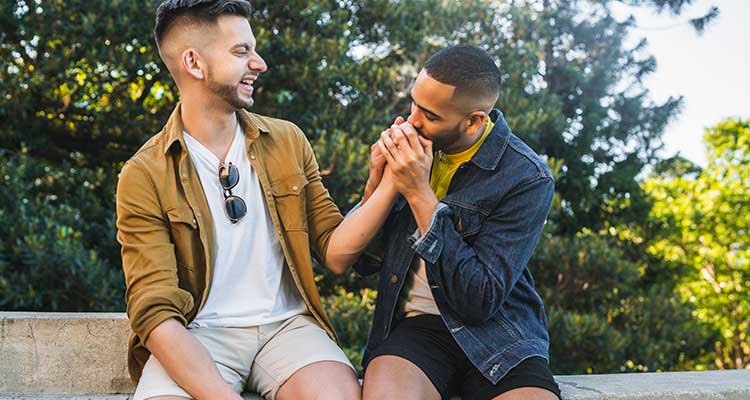
This is another one of those archaic terms that include people who are attracted to people of the same sex/gender or similar gender. Homosexuals are often further divided into two categories, i.e., gay and lesbian, depending on their gender. A gay person would be a man with same-sex sexual attraction, that is, he would be attracted to men. A lesbian would be a woman attracted to women.
Related Reading: Am I A Lesbian? Here Are 10 Signs That May Help You Know For Sure
7. Polysexuality
This involves sexual or romantic attraction to people from many genders. Polysexual orientations include bisexuality, pansexuality, spectrasexuality, omnisexuality, and queerness, among others. Polysexual people use that word to indicate their experience of a variety of sexual orientations.
Polyromanticism is the associated romantic orientation, which is when you experience romantic attraction toward multiple, but not all, gender identities. This concludes 7 types of sexualities, but, there are a lot more.
8. Bisexuality
Before you ask, “What is bisexual?”, consider this: has the thought “I am bisexual” been giving you resonance or joy? Bisexual or bi people are the ones who feel attracted to more than one gender, including same sex attraction. They can be attracted to cisgender men and women as well as transgender and nonbinary folks.
You cannot divide bisexual people into two distinct halves of heterosexuality and homosexuality. The attraction is not just sexual, though, and can include romantic and emotional attraction too. The associated romantic orientation with bisexuality is biromanticism. Biromantic people are romantically, but not sexually, attracted to more than one gender, including their own.
9. Bicuriosity
Bicurious people are ones who are still exploring and not quite sure if they’re bisexual. They don’t want to accept bisexuality as a label yet/ever. So, they may be open to dating or sleeping with people of their own and other genders, at least until they’ve confirmed their orientation. For example, if you have been identifying yourself as heterosexual and now you want to discover the realm of bisexuality, you can call yourself bicurious. A person can stay bicurious their whole life, not fixating on a specific label.
Related Reading: I’m Bisexual Woman Married To A Man
10. Pansexuality
Pan means all, thus, pansexual people can be sexually attracted to people regardless of their gender, sex, or orientation. Panromanticism is the associated romantic orientation with this sexuality, which means romantic attraction to people without taking their gender, sex, or orientation into account.

11. Demisexuality
Demisexuality falls on the ace – or asexual – spectrum. Demisexuals can get sexually attracted to people but they usually need a strong emotional or romantic connection to be established first. Once that condition is met, demisexuals can enjoy sex as usual but may not engage in sex as much as a non-demisexual would.
Like demisexuals, demiromantic people also need certain conditions met before they feel any romantic feelings toward a person. Usually, this means that they need an emotional connection to be established first before they feel lovey-dovey toward anyone.
Related Reading: What Is Platonic Dating? Does It Practically Work Out In Real Life?
12. Graysexuality
Graysexual people are, again, ones on the asexual spectrum in the sexualities list. They do feel sexual attraction and they do desire sex now and then but often, when their partner feels horny, they might not. These people are more comfortable with non-sexual physical intimacy such as cuddling. Graysexual is a middle ground between allosexual and asexual, closer to asexual.
The associated romantic orientation with this is grayromanticism. Grayromantics are on the aromantic spectrum. This means that they do experience romantic feelings toward people but not as much as others. Grayromantics hardly ever feel the urge to initiate a romantic relationship even if they are romantically attracted to someone. They exist in the gray section between romantic and aromantic.
13. Cupiosexuality
This one was a new term even for me, and makes me wonder yet again, “How many sexualities ARE there?” Cupiosexuality includes aces (or asexual people) who, while don’t feel any sexual attraction, do want to hook up, have sex, and engage in similar physical activities. Associated romantic orientation: cupioromanticism. Cupioromantics want romantic relationships even though they feel no romantic attraction.
14. Autosexuality
Autosexuality is sexual attraction toward oneself. Many of them might prefer to masturbate rather than have sex with others or even a partner. Talk about self-reliance, huh? The associated romantic orientation is autoromanticism. They feel romantically toward their own selves. They have difficulty with expressing or receiving romantic gestures, but like fulfilling their fantasies with themselves. Autoromantic people may also experience sexual attraction toward other people.
15. Ceterosexuality
Ceterosexuality is when people experience sexual attraction toward trans and nonbinary people. The term does NOT refer to the fetish, sexualization, and objectification of trans/enby people. Ceteroromanticism, the associated romantic orientation, entails romantic attraction to trans and nonbinary folks.
Related Reading: 13 Non-Sexual Touches To Feel Intimate And Close
16. Sapiosexuality
Commonly seen on dating apps, and mostly inaccurately used, sapiosexuals are those who feel sexually attracted based on intelligence, rather than sex, gender, looks, or other personality characteristics. You can have any other sexual orientation as well along with being a sapiosexual. Its associated romantic orientation, sapioromanticism, involves romantic attraction toward people based on intelligence.
17. Abrosexuality
Abrosexuals have a fluid sexuality, which means that they oscillate between different types of attraction and sexualities all their lives. They exemplify the fact that sexual attraction is ever-evolving and can change intensities and labels. Similarly, abroromantic people have a romantic orientation that is fluid all their lives.
18. Heteroflexibility and homoflexibility
A heteroflexible person might define themselves as heterosexual but could experience occasional attraction to the same or other gender identities. A homoflexible person might describe themselves as homosexual but could experience the occasional attraction to other gender identities.
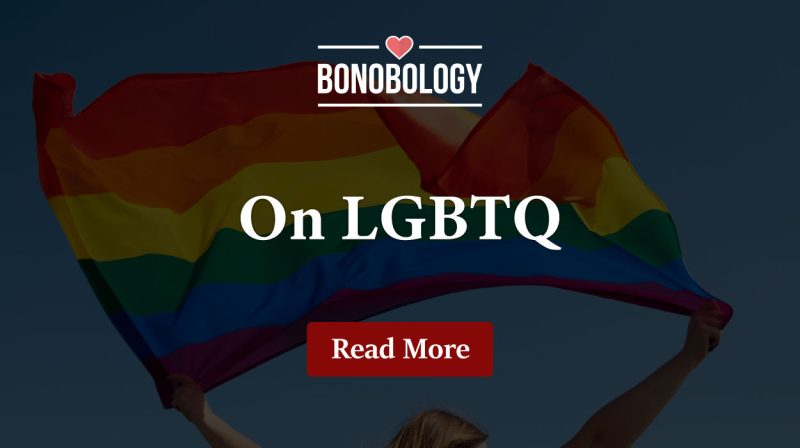
So, before we conclude, let me ask you a question – Are we more accepting now, as a society, of different types of sexualities? Deepak happens to believe, “It’s better than before. But we can’t call ourselves an accepting society yet. We have specific accepting people in the society and we’re witnessing changing perceptions of sex and attraction, but we simply don’t have enough acceptance at a social, legal, and systematic level to characterize ourselves as an accepting society.”
Support for LGBTQIA+ community
If you’re confused or struggling to identify/come to terms with your sexual and/or romantic orientation but really do want to go down this path of self-exploration, seeking support from the right resources can be the best thing you can do for yourself. Some groups and clinics that queer people can turn to for support, according to Medical News Today, are:
- The Trevor Project: This organization describes itself as providing information and support to the LGBTQ community
- Audre Lorde Project: Based in New York City, this organization promotes social justice for lesbian, gay, bisexual, two-spirit, trans and gender nonconforming (LGBTSTGNC) People of Color
- Zuna Institute: This advocacy organization for Black lesbians focuses on the areas of health, public policy, economic development, and education
- National Queer Asian Pacific Islander Alliance: This organization states that it “empowers LGBTQ+ Asians and Pacific Islanders through movement capacity building, policy advocacy, and representation.”
- The American Institute of Bisexuality: Also known as the Bi Foundation, this organization supports people who identify as bisexual
- CenterLink: People in the United States, Australia, Canada, Colombia, China, and Uganda can use this website to find local LGBTQIA+ community centers
- Equality Federation: This federation provides a directory of statewide LGBTQIA+ organizations
Key Pointers
- Sexuality is who you’re attracted to, and gender identity is how you perceive your gender. Both can evolve with time
- Sexual orientation and romantic orientation are who you’re sexually attracted to and who you’re romantically attracted to, respectively
- As people come to know more about themselves and are exposed to more truths, more and more types and meanings of sexual orientations keep emerging
We can only hope the picture will change over time and people across all types of sexualities and genders will gain equal rights, legal reforms, amends, respect, and validation. While this article just lists 18 types of sexualities, know that there are many more out there. Considering how many sexualities there are, it may be hard to find out who you are right away. But even if you don’t relate to the sexualities and their meanings listed here, know that your feelings and your existence are valid. Don’t let anyone tell you otherwise.
FAQs
Even if you’re part of the community, you might just know about 5 to 7 types of sexualities off the top of your head. For me too, it’s always exciting and exhilarating to know that there are so many different kinds of sexualities that we’re only now able to vocalize. Though the list above has some common as well as uncommon sexual orientations, please know this number will only increase with time and deconstruction of heteronormativity.
Have you been thinking, “Am I gay/<insert a specific sexuality>?” Here are some things to keep in mind:
a) You don’t have to know for sure. Many people in the LGBTQIA+ community keep evolving when it comes to their identity and are okay with going label-free, or adopting a larger label like ‘queer’ or ‘gay’ to describe themselves
b) Take your time, there’s no rush
c) Exposing yourself to the global or local community, whether online or in real life, is the best way to understand your attraction and desire, and to be able to find words for it
d) No one else can decide your sexuality for you, not your best friend, not that cool queer elder you met at that event, not the hundreds of YouTube influencers. The label/labels you resonate with must only come from you
e) There’s no right or wrong answer, and you’re allowed to change your mind
f) Go through the above sexual orientation list and see if you resonate with any label
Fluid Relationship Is A New Thing And This Couple Is Breaking The Internet With It
Queerplatonic Relationship- What Is It And 15 Signs You Are In One
Your contribution does not constitute a charitable donation. It will allow Bonobology to continue bringing you new and up-to-date information in our pursuit of helping anyone in the world to learn how to do anything.

